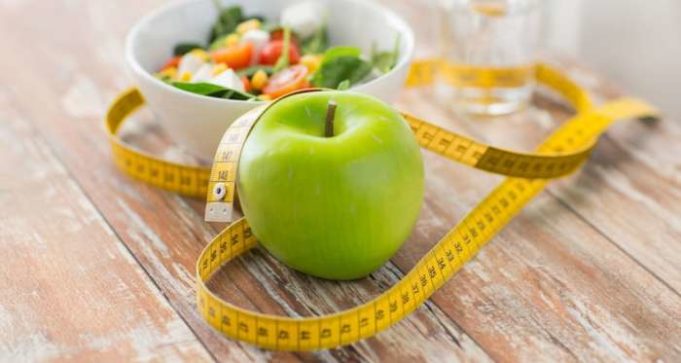How to reverse diabetes with diet is a question on the minds of millions. While there’s no magic bullet, understanding the powerful connection between food and blood sugar can be a game-changer for managing and even reversing type 2 diabetes. This comprehensive guide explores the dietary principles, food choices, and practical tips to empower you to take control of your health.
Diabetes is a complex condition characterized by elevated blood sugar levels, often caused by the body’s inability to produce or effectively use insulin. While genetics and lifestyle factors play a role, diet plays a pivotal role in both managing and reversing diabetes. By adopting a diabetes-friendly diet, you can not only control blood sugar levels but also improve overall health and well-being.
Understanding Diabetes and Diet
Diabetes is a chronic condition that affects how your body regulates blood sugar levels. A healthy diet plays a crucial role in managing diabetes, helping you maintain stable blood sugar levels and prevent complications.
Types of Diabetes and Dietary Needs
Diabetes is broadly categorized into two main types:
- Type 1 Diabetes: This type is an autoimmune disorder where the body’s immune system mistakenly attacks and destroys the insulin-producing cells in the pancreas. Individuals with Type 1 diabetes require daily insulin injections to regulate blood sugar levels. Their dietary needs focus on maintaining consistent blood sugar levels through careful carbohydrate intake and timing of meals.
- Type 2 Diabetes: This type is characterized by insulin resistance, where the body doesn’t use insulin effectively, leading to high blood sugar levels. Lifestyle changes, including diet and exercise, are crucial for managing Type 2 diabetes. Dietary needs focus on lowering blood sugar levels, managing weight, and improving insulin sensitivity.
Impact of Blood Sugar Levels on the Body
Blood sugar, also known as glucose, is the body’s primary source of energy. When blood sugar levels are too high (hyperglycemia) or too low (hypoglycemia), it can have serious consequences for the body.
High blood sugar levels can damage blood vessels, leading to complications like heart disease, stroke, kidney disease, nerve damage, and vision loss.
Low blood sugar levels can cause weakness, dizziness, confusion, and even seizures.
Dietary Principles for Diabetes Reversal
The path to reversing diabetes involves adopting a lifestyle that supports healthy blood sugar levels. This includes making strategic dietary changes to manage carbohydrate intake, prioritize healthy fats and proteins, and optimize overall nutrition.
Controlling Carbohydrate Intake
Controlling carbohydrate intake is a crucial element in managing blood sugar levels. When you consume carbohydrates, your body breaks them down into glucose, which is then used for energy. However, if you consume too many carbohydrates, your blood sugar levels can spike, leading to insulin resistance and, ultimately, diabetes.
- Limit processed carbohydrates: Processed carbohydrates, such as white bread, pastries, and sugary drinks, are quickly digested and can cause rapid blood sugar spikes. Opt for whole grains, fruits, and vegetables, which are rich in fiber and digested more slowly.
- Focus on low-glycemic index foods: The glycemic index (GI) measures how quickly a food raises blood sugar levels. Low-GI foods, such as legumes, nuts, and non-starchy vegetables, are digested slowly and lead to more gradual blood sugar increases.
- Prioritize fiber-rich foods: Fiber slows down the absorption of carbohydrates, preventing rapid blood sugar spikes. Good sources of fiber include whole grains, legumes, fruits, and vegetables.
- Choose whole grains over refined grains: Whole grains, such as brown rice, quinoa, and oats, contain more fiber and nutrients than refined grains, such as white rice and white bread.
Incorporating Healthy Fats and Proteins
While carbohydrates play a role in diabetes management, it’s equally important to incorporate healthy fats and proteins into your diet.
- Include healthy fats: Healthy fats, such as those found in olive oil, avocados, nuts, and fatty fish, can help improve insulin sensitivity and regulate blood sugar levels.
- Choose lean protein sources: Lean protein sources, such as fish, poultry, beans, and lentils, can help stabilize blood sugar levels and promote satiety, preventing overeating.
- Limit saturated and trans fats: Saturated and trans fats, found in red meat, butter, and processed foods, can raise cholesterol levels and increase the risk of heart disease.
Food Choices for Diabetes Reversal

Making the right food choices is crucial for reversing diabetes. It involves focusing on nutrient-rich, whole foods that help regulate blood sugar levels and promote overall health.
Foods Beneficial for Managing Blood Sugar Levels
These foods can help regulate blood sugar levels, leading to better diabetes management.
- Non-Starchy Vegetables: These vegetables are low in carbohydrates and high in fiber, which helps slow down the absorption of sugar into the bloodstream. Examples include broccoli, spinach, kale, Brussels sprouts, and asparagus.
- Lean Protein: Protein helps regulate blood sugar levels by slowing down the absorption of carbohydrates. Good sources include chicken, fish, tofu, beans, and lentils.
- Healthy Fats: Unsaturated fats, such as those found in olive oil, avocados, nuts, and seeds, can help improve insulin sensitivity, which is essential for effective blood sugar regulation.
- Whole Grains: Whole grains are a good source of fiber and other nutrients that help regulate blood sugar levels. Choose whole-grain bread, brown rice, quinoa, and oats over refined grains.
- Fruits: Fruits are a good source of vitamins, minerals, and fiber. However, it’s important to choose fruits with a lower glycemic index (GI), which means they are digested more slowly and don’t cause rapid spikes in blood sugar. Examples include berries, apples, and pears.
The Role of Fiber in Diabetes Management
Dietary fiber plays a crucial role in managing blood sugar levels. It slows down the absorption of sugar into the bloodstream, preventing sudden spikes. High-fiber foods also help promote feelings of fullness, which can aid in weight management.
- Legumes: Beans, lentils, and chickpeas are excellent sources of fiber and protein.
- Whole Grains: Whole-grain bread, brown rice, quinoa, and oats are rich in fiber.
- Fruits: Berries, apples, pears, and bananas are good sources of fiber.
- Vegetables: Broccoli, spinach, kale, Brussels sprouts, and asparagus are high in fiber.
- Nuts and Seeds: Almonds, walnuts, chia seeds, and flaxseeds are good sources of fiber and healthy fats.
Sample Meal Plan for Diabetes Reversal
Here’s an example of a daily meal plan that incorporates the principles discussed above:
| Meal | Food Choices |
|---|---|
| Breakfast | Oatmeal with berries and nuts, a glass of unsweetened almond milk |
| Lunch | Grilled chicken salad with mixed greens, avocado, and a light vinaigrette dressing |
| Dinner | Baked salmon with roasted vegetables (broccoli, carrots, and bell peppers) and a side of quinoa |
| Snacks | A handful of almonds or a piece of fruit (apple or pear) |
Practical Tips for Implementing Dietary Changes
Making significant changes to your diet can be challenging, but it’s essential for diabetes reversal. This section provides practical tips and strategies to help you navigate the process smoothly and make sustainable changes.
Overcoming Common Challenges
Making dietary changes can be difficult, but with the right strategies, you can overcome these challenges.
- Cravings: When cravings hit, try substituting unhealthy options with healthier alternatives. For example, swap sugary drinks for water infused with fruits or herbs.
- Social Eating: Social gatherings often involve tempting foods. Bring your own diabetes-friendly dish to share, or politely decline unhealthy options.
- Time Constraints: Preparing healthy meals can take time. Plan ahead by prepping ingredients on weekends, or opt for quick and easy recipes.
- Lack of Support: Enlist the support of family and friends, or join a diabetes support group for encouragement and motivation.
Meal Preparation and Planning
Meal planning is crucial for success.
- Plan Ahead: Plan your meals for the week to ensure you have healthy options available. This helps prevent impulsive choices when you’re hungry.
- Cook in Bulk: Prepare large batches of healthy meals and freeze portions for later use. This saves time and ensures you always have something healthy to eat.
- Use a Meal Delivery Service: Consider using a meal delivery service that offers diabetes-friendly options. This can be a convenient solution when you’re short on time.
- Make Healthy Swaps: Instead of using processed ingredients, use fresh fruits, vegetables, and whole grains. This will add flavor and nutrients to your meals.
Resources and Support Systems
Several resources can provide guidance and support on your diabetes journey.
- Registered Dietitian: Consult with a registered dietitian to create a personalized meal plan that meets your individual needs.
- Diabetes Educators: Diabetes educators can provide information, education, and support on managing diabetes.
- Support Groups: Connect with others living with diabetes in support groups for shared experiences, advice, and motivation.
- Online Resources: Many websites and apps offer information, recipes, and tools for managing diabetes. The American Diabetes Association (ADA) website is a valuable resource for evidence-based information.
The Role of Exercise in Diabetes Reversal
Regular physical activity plays a crucial role in managing diabetes and can contribute significantly to diabetes reversal. Exercise helps improve insulin sensitivity, manage blood sugar levels, and promote overall health.
Benefits of Exercise for Diabetes Management, How to reverse diabetes with diet
Exercise offers numerous benefits for individuals with diabetes, including:
- Improved Insulin Sensitivity: Regular exercise increases insulin sensitivity, meaning your body becomes more responsive to insulin, allowing glucose to be taken up by cells more effectively.
- Better Blood Sugar Control: Physical activity helps lower blood sugar levels by using glucose as fuel. This is particularly important for people with type 2 diabetes, as their bodies struggle to regulate blood sugar effectively.
- Weight Management: Exercise is essential for weight loss and maintenance, which is crucial for managing diabetes. Losing even a small amount of weight can significantly improve insulin sensitivity and blood sugar control.
- Reduced Risk of Complications: Regular exercise can reduce the risk of developing diabetes-related complications, such as heart disease, stroke, and nerve damage.
- Improved Mood and Well-being: Exercise releases endorphins, which have mood-boosting effects and can help reduce stress and improve overall well-being.
Types of Exercise for Diabetes Reversal
There are many types of exercise that are beneficial for individuals with diabetes. The key is to find activities that you enjoy and can incorporate into your routine.
- Aerobic Exercise: This type of exercise involves continuous movement that elevates your heart rate and breathing. Examples include brisk walking, jogging, swimming, cycling, and dancing. Aim for at least 30 minutes of moderate-intensity aerobic exercise most days of the week.
- Strength Training: Resistance training, such as lifting weights or using resistance bands, helps build muscle mass, which can improve insulin sensitivity and blood sugar control. Include strength training exercises 2-3 times a week, targeting major muscle groups.
- High-Intensity Interval Training (HIIT): HIIT involves short bursts of intense exercise followed by brief recovery periods. This type of exercise can be effective for improving fitness and blood sugar control, but it’s important to consult your doctor before starting HIIT if you have any health concerns.
Incorporating Exercise into Your Daily Routine
Making exercise a regular part of your routine can be challenging, but there are strategies to make it easier:
- Start Gradually: Don’t try to do too much too soon. Begin with short, low-intensity workouts and gradually increase the duration and intensity as you become more fit.
- Find Activities You Enjoy: Choose activities that you find enjoyable and motivating. If you enjoy dancing, take a dance class. If you like swimming, go for a swim. Finding activities you enjoy will make it more likely that you’ll stick with them.
- Make It a Social Activity: Exercise with a friend, family member, or join a group fitness class. Having a workout buddy can provide motivation and support.
- Be Consistent: Consistency is key. Aim for at least 30 minutes of moderate-intensity exercise most days of the week. Even short bursts of activity can be beneficial.
Monitoring Blood Sugar Levels: How To Reverse Diabetes With Diet
Regularly monitoring your blood sugar levels is crucial for managing diabetes and achieving successful reversal. Understanding your blood sugar fluctuations helps you make informed dietary and lifestyle choices to maintain optimal blood glucose control.
Methods of Blood Sugar Monitoring
There are various methods for monitoring blood sugar levels, each with its advantages.
- Self-Monitoring of Blood Glucose (SMBG): This involves pricking your finger to obtain a blood sample and using a glucose meter to measure the sugar level. SMBG is a common method for frequent monitoring, providing immediate results and allowing for adjustments to diet or medication as needed.
- Continuous Glucose Monitoring (CGM): CGM devices continuously measure your blood sugar levels throughout the day and night using a small sensor inserted under your skin. This provides a more comprehensive picture of your blood sugar trends, helping you identify patterns and make more informed decisions.
- Hemoglobin A1c Test: This blood test measures your average blood sugar level over the past two to three months. It provides a long-term overview of your blood sugar control and is a useful tool for assessing the effectiveness of your diabetes management plan.
Interpreting Blood Sugar Readings
Understanding your blood sugar readings is essential for effective diabetes management.
- Target Blood Sugar Ranges: Consult your healthcare provider to determine your individual target blood sugar ranges. These ranges vary depending on factors such as your age, health conditions, and medication.
- Pre-Meal Blood Sugar: Aim for a pre-meal blood sugar level within the recommended range. If your blood sugar is consistently high before meals, you may need to adjust your diet or medication.
- Post-Meal Blood Sugar: Your blood sugar levels will rise after eating, but they should return to a normal range within a few hours. If your blood sugar remains elevated for a prolonged period after meals, it may indicate a need for dietary changes or medication adjustments.
- Hypoglycemia (Low Blood Sugar): If your blood sugar drops below the recommended range, you may experience symptoms such as dizziness, sweating, or confusion. It’s important to carry a source of fast-acting carbohydrates, such as glucose tablets or juice, to quickly raise your blood sugar if needed.
Adjusting Dietary Choices Based on Blood Sugar Readings
Regular blood sugar monitoring provides valuable insights into how your body responds to different foods.
- Identify Trigger Foods: Pay attention to foods that consistently cause significant blood sugar spikes. These may include sugary drinks, refined carbohydrates, and processed foods.
- Adjust Portion Sizes: If you notice that certain foods cause your blood sugar to rise too high, try reducing the portion size or consuming them with a source of fiber, such as vegetables or whole grains.
- Experiment with Timing: The timing of your meals can also influence your blood sugar levels. Experiment with different meal schedules and see how your body responds.
The Importance of Consulting Healthcare Professionals
While adopting a diabetes-reversing diet can be empowering, it’s crucial to understand that managing diabetes effectively requires a collaborative approach with healthcare professionals. Regular consultations with your doctor and a registered dietitian are essential for ensuring your safety and maximizing your chances of success.
The Role of Healthcare Professionals in Diabetes Management
A healthcare team plays a vital role in managing diabetes. This team typically includes your primary care physician, a registered dietitian, and possibly other specialists like an endocrinologist. Each member contributes their expertise to create a personalized plan for your specific needs.
- Primary Care Physician: Your doctor monitors your overall health, manages any underlying conditions, and prescribes medications if necessary. They also help you understand your blood sugar levels and make adjustments to your treatment plan as needed.
- Registered Dietitian: A registered dietitian (RD) is a qualified nutrition expert who specializes in developing personalized diabetes meal plans. They can guide you on appropriate food choices, portion sizes, and meal timing to help you achieve your blood sugar goals.
- Endocrinologist: An endocrinologist is a specialist in hormonal disorders, including diabetes. They may be involved in managing complex cases, particularly if medications or insulin therapy are required.
Benefits of Consulting Healthcare Professionals
Consulting with healthcare professionals offers several benefits, including:
- Personalized Care: Your healthcare team can create a personalized diabetes management plan tailored to your individual needs, medical history, and lifestyle.
- Safety and Risk Management: They can identify potential risks and complications associated with diabetes and advise you on how to minimize them.
- Monitoring and Adjustments: Regular checkups and blood sugar monitoring allow your healthcare team to track your progress, make necessary adjustments to your treatment plan, and ensure your safety.
- Education and Support: They provide education about diabetes management, answer your questions, and offer ongoing support to help you stay motivated and make informed decisions.
Working Closely with Your Healthcare Team
Successful diabetes management requires a strong partnership between you and your healthcare team. Here’s how to ensure effective collaboration:
- Open Communication: Be open and honest with your healthcare team about your concerns, challenges, and progress. Ask questions and share any changes in your health or lifestyle.
- Active Participation: Take an active role in your diabetes management by following your treatment plan, tracking your blood sugar levels, and making healthy lifestyle choices.
- Regular Checkups: Attend all scheduled appointments with your healthcare team to monitor your progress and make adjustments as needed.
Conclusion
Reversing diabetes with diet is a journey that requires dedication, knowledge, and support. By understanding the role of food in managing blood sugar levels, adopting a balanced diet, and seeking guidance from healthcare professionals, you can take significant steps towards improving your health and potentially reversing diabetes. Remember, it’s not about eliminating your favorite foods, but rather making mindful choices that support your long-term health and well-being. With commitment and a holistic approach, you can empower yourself to live a healthier and happier life.
Question Bank
Can I reverse diabetes without medication?
While diet and lifestyle changes can significantly improve blood sugar control and potentially reverse type 2 diabetes, it’s crucial to consult with your healthcare provider to determine the best course of action for your individual needs. Some individuals may still require medication alongside dietary and lifestyle modifications.
What are the best foods to eat for diabetes reversal?
Foods rich in fiber, lean protein, and healthy fats are generally beneficial for managing blood sugar levels. This includes vegetables, fruits, whole grains, nuts, seeds, and lean meats. It’s essential to limit processed foods, sugary drinks, and refined carbohydrates.
How long does it take to reverse diabetes with diet?
The time it takes to see results varies from person to person and depends on factors such as the severity of diabetes, adherence to the diet plan, and other lifestyle factors. Consistent effort and monitoring are key to achieving lasting results.
While reversing diabetes through diet alone is challenging, it’s possible to manage the condition and potentially improve blood sugar levels. A crucial step is adopting a recommended diet for diabetics that emphasizes whole, unprocessed foods, lean protein, and healthy fats.
This approach can help regulate blood sugar, reduce inflammation, and support overall health, potentially contributing to diabetes management and reversal.
Reversing diabetes with diet often involves carefully planning meals and snacks. This might include freezing portions of healthy meals to have on hand for those busy days. But how long can you actually keep these foods in the freezer? To find out, check out this helpful guide on how long do foods last in the freezer.
Knowing this information can help you make the most of your frozen meals and keep your diabetes management on track.
Reversing diabetes often involves a significant dietary overhaul, and one key aspect is understanding how to manage carbohydrate intake. Rice, a staple food in many cultures, can be incorporated into a diabetes-friendly diet when consumed strategically. You can find out more about how to diet with rice and how to choose the right types for your needs.
By focusing on whole grains, limiting refined carbohydrates, and prioritizing fiber-rich foods, you can create a balanced diet that supports both diabetes management and overall health.
























